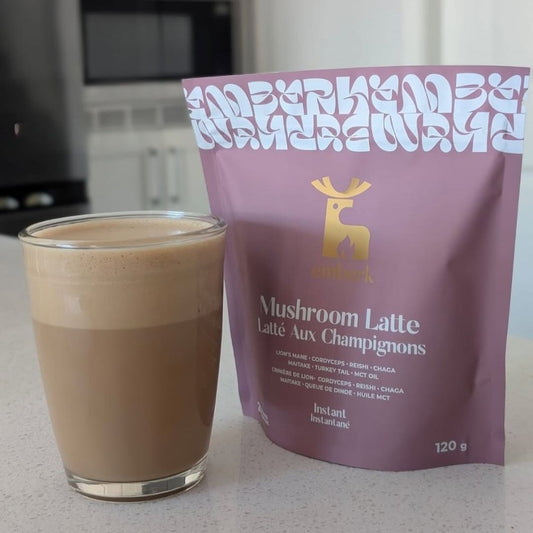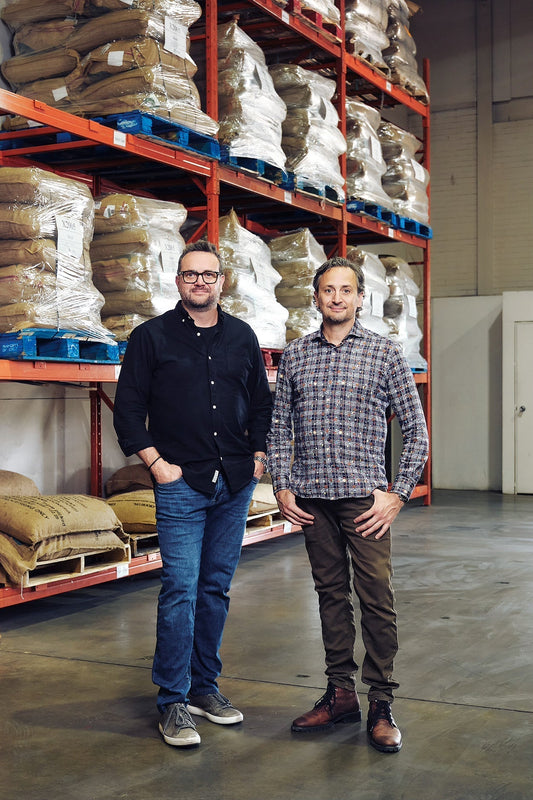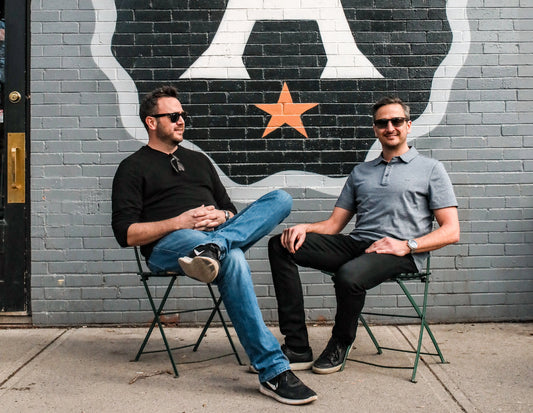How to Fix a Bad Pour Over Coffee

Have you ever been in the frustrating position where you’ve made a bad Pour Over coffee, not knowing where you went wrong? We’ve been there too–that’s why we made a comprehensive guide to show you how to fix a bad coffee.

Pour Over coffee can be delicious. It can be the last thing you think about before bed, and the first thing you think about upon waking. Then again, coffee can also be not-so-delicious. It’s discouraging when you buy quality coffee, only to make an unsavoury cup. Even the best beans won’t make a good cup of coffee if you don’t know the basics. A poorly brewed cup of coffee can taste sour, bitter, flat, burnt, or cardboard-like. Read up on how to fix a bad coffee, and you’ll never have a morning-ruining cup of coffee again!
**Note
When we say “fix” bad coffee, we don’t mean that you can alter the cup after the fact. We simply mean that you can start over and make a new, delicious cup. There’s nothing you can do to a bad coffee but accept it and move on. So cut your losses, grab a new coffee filter, and let’s get to work.
Coffee Flavour variables
First, it’s crucial to understand all the different variables that affect the flavour of coffee. Here are the main things you have control over. The main thing to start with, is fresh roasted coffee from your local coffee roaster of choice…..like Fratello Coffee Roasters.
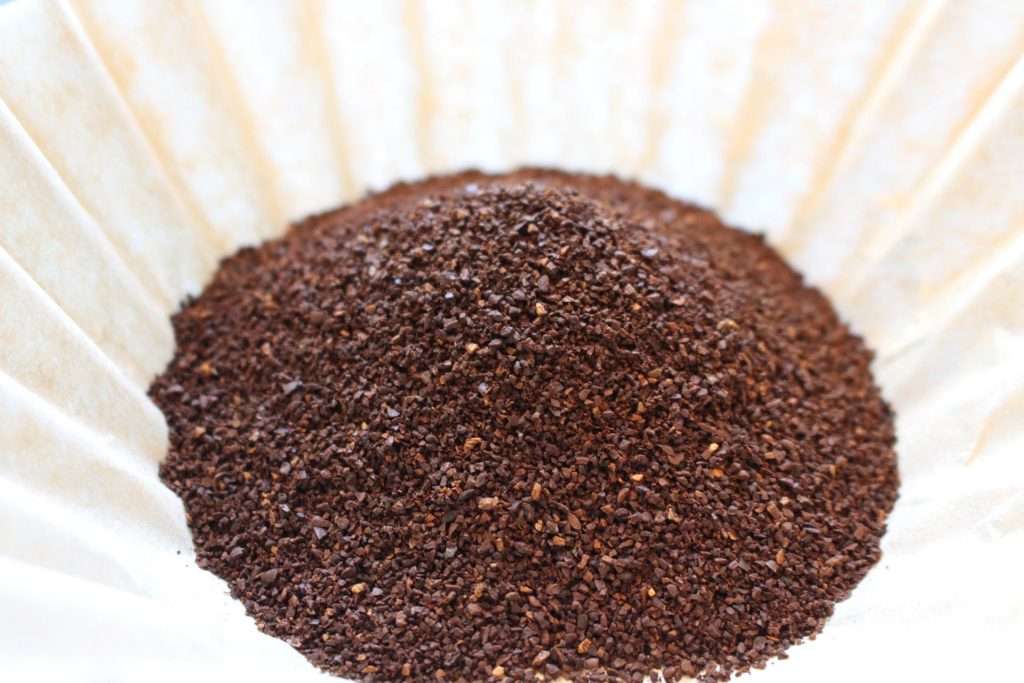
Coffee Grind Size
Grind size is really important to making a good cup of coffee. A good cup of coffee is one that has been extracted enough–not too little, and not too much. Extraction refers to the amount of flavour and caffeine being pulled out of the coffee by the hot water.
Grind size plays a key role in extraction. When it comes to most coffee methods, a finer grind leads to a faster extraction rate. Conversely, a coarser grind leads to a slower extraction rate. For example, a pour over has a relatively quick brew time, which calls for a finer grind. You want to extract the flavours quickly. A French press, on the other hand, calls for a coarser grind, to slow down the extraction rate. Due to the longer brewing time and the immersion element, a fine grind would produce a very bitter French press.
Brew Ratio
The ratio of water to coffee will dictate the strength of your cup of coffee. The most popular, recommended ratio of water to coffee is 1:16 or 1:15. So, if you’re using 20 grams of coffee, you would use 300-320 mL of hot water. While you can play around with the amounts, try not to diverge too much from the golden ratio.
Water Temperature
The water you use to brew coffee should be hot, but not boiling. Water straight off the boil can give your coffee a burnt taste. Ideally, it should be between 93-96 degrees C. To achieve this temperature, bring a pot of water to the boil, and let it rest for 30-45 seconds.
Coffee Brewing Gear
Changing up your coffee equipment slightly can immediately fix a bad coffee. If you’re using a cheap automatic drip machine, consider switching to a pour over dripper set. It’s inexpensive and low-tech, and it will make a better cup than your clunky old coffee maker.
If you can, purchase a gooseneck kettle. Not only do they look beautiful in your kitchen, but they also let you control the flow of the water. Pouring your water straight from a kettle can make the water flow too quickly, resulting in under extraction. If you don’t have one, consider pouring your water into a metal pitcher or a heat-proof container with a spout.
While optional, a weight scale is helpful for weighing coffee beans, and great for gauging how your coffee is going.
The most common cause of bad coffee
The biggest factor affecting the flavour of your coffee is the grind. Your coffee can be ground too fine or too coarse, and it can also be ground inconsistently. We hope that you’re not using a blade grinder, as this will result in an inconsistent grind. Blade grinders, while cheap and convenient, will most definitely produce a bad coffee. What you’ll get is a cup that’s both bitter and sour. It will also lead to a flat flavour, with not many distinctive flavour notes. As a serious coffee drinker, it’s time you invest in a proper burr grinder. If you’re not ready to invest in an electric burr grinder, consider purchasing a manual hand grinder.
If you already do have a burr grinder and you’re finding your coffee isn’t tasting great, you could be grinding your coffee too fine or too coarse. Does your coffee taste strong and bitter? Set your grinder a few notches coarser. Does your coffee taste weak and sour? Go a little finer.
Now that you understand extraction and its effect on the overall flavour, it’s time to put your knowledge to the test. Try our foolproof pour over, and you’ll be an expert going forward. Make sure to read the directions from start to finish before trying your hand at this recipe.
What you’ll need:
- Gooseneck kettle
- Pour over dripper (ceramic or plastic works fine). We like to use the Hario.
- #2 paper filter
- Mug
- Weight scale
- 320 mL of hot water off the boil
- 20 grams of coffee beans
- Burr grinder
- Small metal spoon
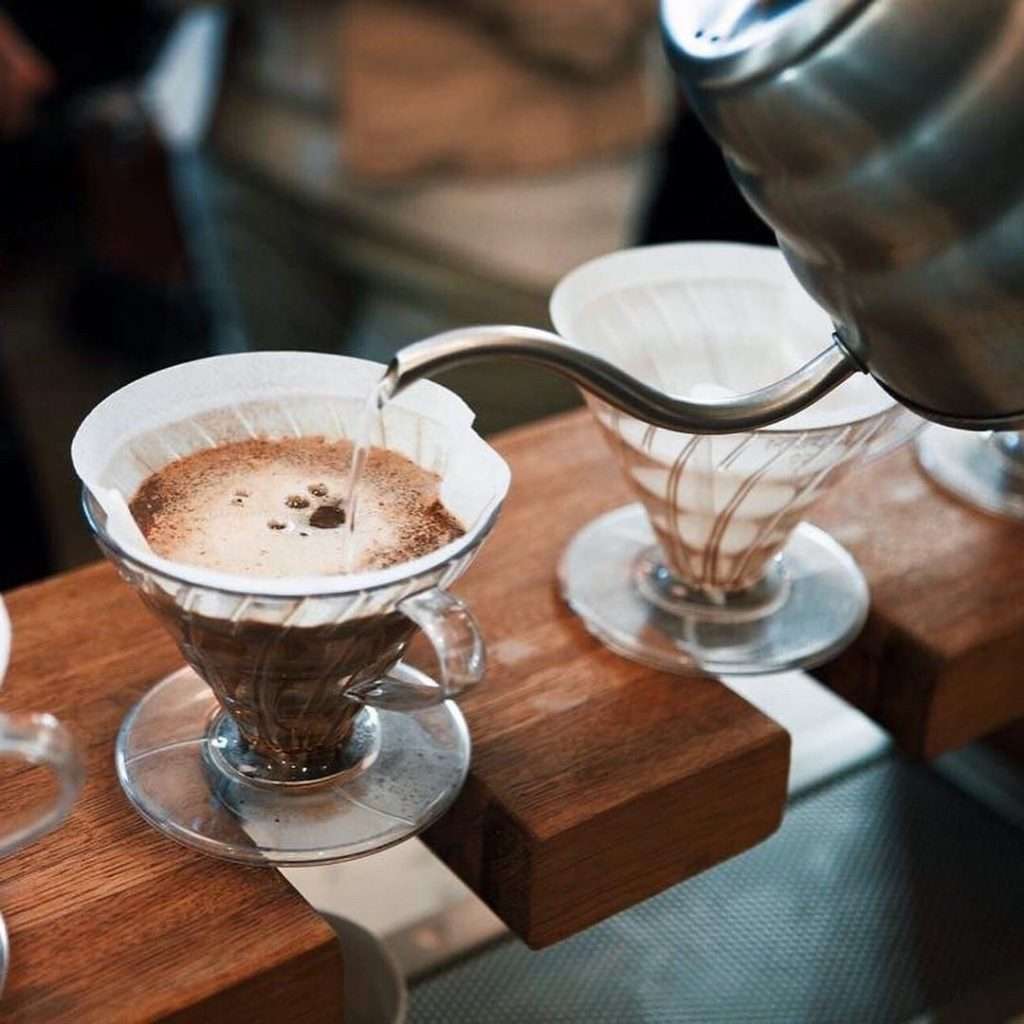
- Weigh your beans. Pour your beans into your grinder, and grind on a setting that’s finer than drip. Set aside.
- Bring your water to a boil. Set aside for 30-45 seconds. Place the paper filter in the pour over dripper, and place the dripper on top of a medium-sized mug. Pour hot water all over the empty filter until the whole filter is wet. Discard the water.
- Place the ground coffee in the filter. Give the dripper a tap to level out the coffee bed. Place the mug and dripper on a weight scale, and press the tare button to set it to zero.
- “Bloom” your coffee. (This is the process of adding a small amount of water to the grinds and allowing the CO2 to dissipate.) Pour 50 grams of hot water over the grinds, making sure to get them all wet. Wait 45 seconds before your second pour.
- Begin your second pour. Pour the water in concentric circles, starting from the centre and working outwards, until you reach 200 ml on the weight scale. Grab your small spoon, and gently mix the coffee grinds and the water. Wait until all the water has drawn down before you begin your third pour.
- Begin your third pour. Moving in concentric circles, pour the remaining water until the weight scale reaches 320 mL. Let the water fully draw down. Remove the dripper and set aside. Your pour over is complete!
Tip: your pour over should take about 3 minutes and 15 seconds. If it takes longer than this, make your grind a little coarser. If it takes less time than this, make your grind a little finer. Use a timer for optimal results.
Want more tips to improve the flavour of your coffee at home? Check out our Coffee Storage guide!



